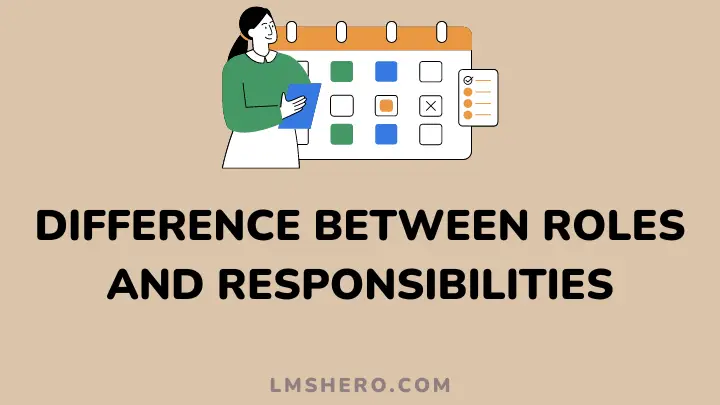Yes. When done correctly, online courses can detect cheating, and instructors can tell if a student is cheating on exams. This is because online learning systems are now integrating anti-cheating software that can detect academic dishonesty.
Exams are designed to assess a student’s ability accurately. The findings will be inaccurate in demonstrating their true capability if the integrity of the exam is compromised.
Cheating is wreaking havoc on the educational system, and many schools are aware of this unpleasant fact.
Online schools still struggling to establish a reputation and demonstrate dependability are usually perceived as inferior to their traditional counterparts, and widespread cheating doesn’t help matters.
Why Do Students Cheat?
Exam cheating is any deliberate or accidental act of academic misconduct that gives some exam takers an excessive edge over others. It’s a significant disciplinary offense with severe consequences for pupils and educational institutions that conduct assessments.
In a traditional school setting, students use various methods to cheat on exams. Some bring personal notes with them into the exam rooms; some pupils whisper the answers to their friends while taking the tests, while some kids simply try to copy the responses of the students next to them.
Students continue to cheat on tests even though institutional consequences are becoming more severe with each session, with many students deciding to drop out.
Students cheat for various reasons, the most common of which is a fear of failing.
Some students believe that failing the tests will lead to several other problems they are unwilling to face, while some students incorrectly assume that they lack the intelligence required to pass the tests.
They attempt to cheat on tests rather than studying properly, listening in class, revising courses, and doing exercises.
How Do Students Cheat In An Online Exam?
1. By Sharing Screen
When it comes to screen sharing during exams, a student doesn’t require much. Because online courses conduct exams remotely, the student can have a friend login in from another computer to access the exam questions and provide answers or assistance.
Students have also used software such as Team Viewer, which allows a third party to remotely manage a student’s computer and take the exam on their behalf.
2. Impersonation
The practice of soliciting or employing someone else to take an exam on your behalf is known as impersonation. This isn’t a novel technique; many students have practiced this method of cheating. With online evaluations, the risks are significantly higher.
Impersonation can occur at two points during the examination process: before and after the exams. Students give the impersonator their login details before the exams.
During the exam process, impersonation can take numerous forms. One method is for students to use resources such as virtual servers to provide their impersonator remote access.
3. Using Advanced Software And Technologies
Exam candidates don’t mind employing sophisticated tech devices and software to cheat in online proctored tests.
The use of remote software is one of the most prevalent cheating methods on online tests. Students must download remote software to connect with outside help. Some students even cheat on exams by using web versions of apps like Telegram.
Some candidates also use smartwatches and microphones, as these devices allow students to interact with people outside the classroom about their exams.
In online proctored tests, students can potentially use projectors or cameras to cheat. Students can project comments in front of them using cameras attached to their desks.
How To Detect Cheating In Online Exams
Examiners can employ a number of online authentication processes both before and during the exam to prevent imposters from taking the exam on behalf of actual test candidates.
To ensure a safe examination drive from start to finish, it is necessary to perform multiple levels of monitoring with extreme precision. Here are a handful of the more sophisticated techniques:
1. Proctoring software
This is one of the most successful strategies for detecting cheating on online tests. Before taking the test, online exam administrators make the student install proctoring software such as Mettl on their computer.
Such software can appear as a web browser that locks the system and limits the student’s activities while completing the test.
Surveillance devices like mics and webcams activate with the help of proctoring software to watch the candidate’s actions during online tests.
2. Real-time proctoring
Live proctoring is a hybrid of computerized and human proctoring in which a person and proctoring software capture the candidate’s and their computer’s actions before and throughout the exam.
A proctor is trained to verify a student’s identity and prevent cheating on online exams. If the live proctor notices something suspicious, he or she has the authority to call the exam off right away.
When online test cheating detection software detects suspicious behavior, it provides a list of red flags they will examine in real time or later (recorded) to determine the exam’s integrity and fairness.
3. Learning Management Systems
If you use other tabs while taking the online test, your instructors will be able to see it. Learning management systems such as Blackboard, Canvas, and Aralinks benefit instructors.
Special web tools work in unison with proctoring software to supervise screen activity available during online tests.
The generation of new tabs is one of the acts of cheating during an online exam. This indicates that the candidate is looking for solutions on the internet, maintaining a competitive advantage.
As a result, online tests can identify cheating using proctoring software.
4. Observation Of Webcams And Microphones
Proctoring software can, as previously indicated, activate surveillance devices on the student’s PC. The webcam is one of the devices. The webcam is put on once the student has access to the test.
The webcam’s purpose is to keep an eye on any unusual behavior that could lead to online test cheating. Students’ activities can be put together and uploaded to LMS systems like Aralinks with proper proctoring.
Eye and body gestures, moving away from the webcam’s visual field, and the presence of another person within the webcam’s area of vision are all examples of unnecessary bodily gestures.
Online tests can record all sounds and voices in the candidate’s environment when it comes to audio. This ensures that the candidate does not receive any outside help.
5. Keystrokes Validation
Keystroke is unlike any other program you’ve ever used. It’s an excellent tool for determining a student’s typing speed.
Online exam administrators use keystrokes to measure a student’s typing speed to detect cheating more effectively. The time it takes a pupil to type the next word may reveal whether or not he or she is using reference material.
The user’s keyboard rhythms are recorded to create a biometric template of the user’s typing pattern for subsequent authentication.
Static and dynamic typing are the two types of keystrokes that analyze and distinguish authorized and unauthorized users.
6. Plagiarism Detection Software
Even though they aren’t 100 percent accurate at detecting plagiarism, they effectively determine whether a person’s work is original or a copy-paste.
It may be more convenient for a student to copy text from a third-party source, mandating educational institutions’ employment of a plagiarism checker.
7. Personalized Exam Questions
Giving students two sets of exams is another technique to detect cheating in an online class, particularly during assessments.
One section should include questions that are simple to answer and can be found using search engines, while the other may consist of questions that demand more in-depth research and theory.
Students who perform well on easy-to-answer questions but poorly on research-based ones can quickly determine if they are cheating.
What Are The Challenges of Detecting Cheating?
1. Ineffective Identity Verification
Most validators are uncomplicated since they have a few phases, such as the student confirming the photo and going through numerous quick biometric scans.
Many students complete the early phases before hiring a third party to conduct the exam on their behalf.
2. Faulty Anti-plagiarism software
Plagiarism scanners are believed to be inefficient at detecting instances of copy-pasting. Therefore, students have an advantage.
They openly exchange messages and steal stuff from other sources, hoping their actions will go unnoticed.
3. Poor Internet connection
In cases where students don’t have the means to cheat easily, they fake poor internet connections to move around and gain access to reference materials that aid cheating or the ability to communicate with a friend or family member who can assist.
They can achieve this because they’ve intentionally disconnected from the internet provider.
FAQs
How can cheating be stopped?
In these times, we have no option but to hold online exams. Teachers should teach students to inculcate the habit of discipline and diligence in academic activities and other aspects of life. Additionally, there should be a penalty for cheating.
Are honor codes effective?
Yes. Honor codes are still in use at many institutions and are plainly an advanced technique for curbing cheating.
They expect students to take responsibility for their academics and conduct while an honor code is in effect. Educators assume they will not cheat, giving them the benefit of the doubt.
Conclusion
Students who want to cheat in class have always existed, but modern technology has made it easier and more common than ever before.
Faculty and administrators are dealing with several issues related to online education as the medium gains momentum in a range of higher education institutions, including quality of delivery and learning, participation, equity, accessibility, and integrity.
Although reasons for cheating may vary, educators can still learn to identify motivations for student cheating and think critically about solutions to keep even the most audacious cheaters in their classrooms from doing it again.
To conclude, most students don’t really put enough effort to pass their exams, and their catastrophic alternative is to cheat.
To further help you, here are the best learning management systems (LMS) you can use for your online course.
I hope you found this article interesting.
Thanks for reading.







